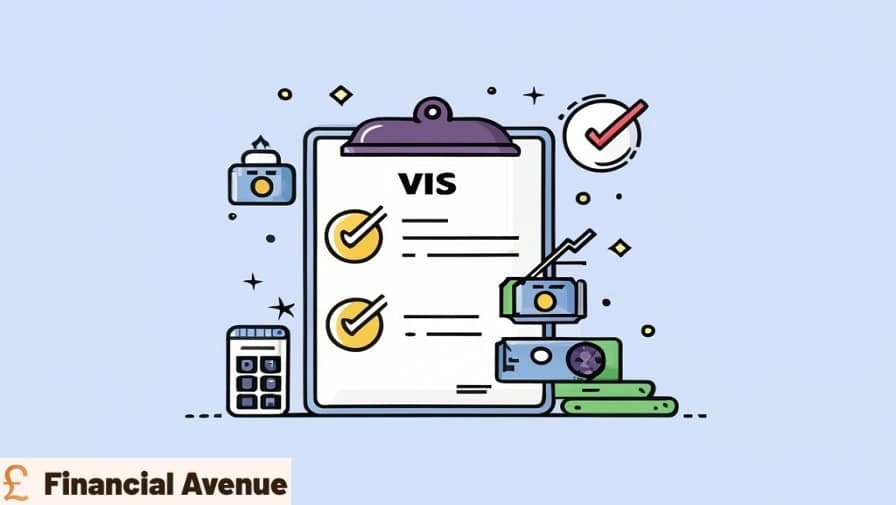Have you ever checked your bank statement only to see an odd charge labeled “VIS” that you don’t recognize? If so, you’re not alone. This confusing VIS charge often leaves bank customers scratching their heads wondering what they could be for.
This blog post will shed light on VIS charges, explaining exactly what they are, when they typically appear, who is usually impacted, and most importantly, how to avoid unnecessary VIS charges on your future bank statements.
What Does “VIS” Stand For?
First things first – VIS stands for “Verification of International Services”. It is essentially an international transaction fee that is charged by either Visa or Mastercard whenever a cardholder makes a purchase from a foreign company or while traveling abroad.
So if you see VIS on your statement, it’s referring to a fee associated with the processing of an overseas debit or credit card payment. The VIS charge goes directly to the credit card networks themselves, not your bank.
Don’t miss learning about NYA*Air-Serv Charge on Your Bank Statement
Why Do You Get Hit With a VIS Fee?
VIS charges exist to cover the additional costs of handling cross-border payments and currency conversions. Any time money has to pass between international payment networks, extra steps and verifications are needed.
You can think of it being similar to the typical ATM withdrawal fee that most banks charge when a customer uses their debit card at an ATM overseas. It’s the cost of having to utilize international banking systems.
Don’t miss learning about BFCB Charge on Your Bank Statement
When Does a VIS Charge Typically Appear?
There are two main scenarios when VIS charges commonly occur:
- International Travel – Any time you use your credit or debit card while traveling abroad, each purchase can trigger a VIS charge. So it’s very common for frequent travelers to incur numerous VIS fees.
- Foreign Companies – Ordering goods or services from a company based overseas can also lead to VIS charges being passed on, even if you’re still physically located in your home country. Popular examples include ordering products on Alibaba, Wish, or Booking a vacation package through a foreign tourism website.
So if you’ve recently taken a trip overseas or ordered something online internationally, that strange VIS acronym is referring to the cost of processing your foreign payment.
Wondering What Is the PNP BILL PAYMENT Charge on Your Bank Statement? Read this article.
How Much is a VIS Fee?
The specific amount of a VIS charge can vary greatly, but is typically around 1% of the total transaction amount. However, it can range from 0.8% on the low end all the way up to 3% with some issuers.
The actual fee percentage depends on factors like:
- The foreign bank’s fees
- International payment network fees
- The currency conversion spread
- Additional charges from your credit card provider
So it really pays to understand your card’s international transaction structure. Many travel reward cards advertise no foreign transaction fees, which can add up to major savings.
Don’t worry if you see VF Northern Europe Charge on Your Bank Statement. Read this article.
Tips to Avoid Surprise VIS Charges
Here are some tips to prevent unexpected VIS charges from popping up on your future bank statements:
- Use a Credit Card with No Foreign Fees – If you travel internationally at least once a year, make sure your primary credit card does not charge foreign transaction fees. This alone can save you hundreds in unexpected VIS charges.
- Watch For International Sellers Online – When shopping online, pay attention to whether the merchant is based overseas and factor in potential VIS fees before completing the purchase.
- Notify Bank of Travel – Give your bank advance notice before any trip abroad so they don’t flag foreign purchases as potential fraud. Getting your card frozen while traveling can spell disaster.
- Review Statements Carefully – Give every line item on your statement a quick glance to identify any surprising charges like VIS fees. Dispute them immediately if unauthorized.
- Set Up Purchase Alerts – Many banks allow you to set up real-time purchase alerts via text or email. Activating them can help spot unwanted international charges.
VIS Charges – The Bottom Line
In summary, the VIS charge on your bank statement refers to an international transaction fee from Visa or Mastercard related to a foreign purchase. Cross border payments involve extra processing which comes at a typical cost of 1-3% per transaction.
While usually harmless, these fees can add up quickly. By understanding what VIS charges represent and taking a few simple precautions with your payment cards, you can avoid unwanted surprises on your next account statement.
So don’t let random three-letter acronyms scare you! Just remember that VIS = international payment fees. Hopefully you now have clarity when it comes to this common banking charge.

Daniel, a seasoned professional with over 5 years of experience in banking, property, and finance, brings a wealth of expertise to the table. This authoritative blog is meticulously curated to provide you with the most up-to-date financial insights. Delving into the dynamic realms of banking and mortgages, Daniel’s passion for finances shines through every post.










